
|
You entered: Earth
 Webb Telescope Mirror Rises after Assembly
Webb Telescope Mirror Rises after Assembly
8.05.2016
Move over Hubble -- here comes the James Webb Space Telescope (JWST). JWST promises to be the new most powerful telescope in space. In the last month, the 18-segment gold-plated primary mirror for JWST was unveiled. In the featured time-lapse video taken last week, the 6.5-meter diameter mirror was raised to a vertical position.
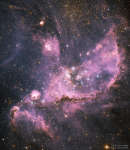 NGC 346: Star Forming Cluster in the SMC
NGC 346: Star Forming Cluster in the SMC
30.11.2020
Are stars still forming in the Milky Way's satellite galaxies? Found among the Small Magellanic Cloud's (SMC's) clusters and nebulas, NGC 346 is a star forming region about 200 light-years across, pictured here in the center of a Hubble Space Telescope image.
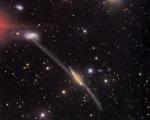 Peculiar Arp 295
Peculiar Arp 295
8.10.2005
A spectacular bridge of stars and gas stretches for nearly 250,000 light-years and joins this famous peculiar pair of galaxies cataloged as Arp 295. The cosmic bridge between the galaxies and the long...
 Symbiotic R Aquarii
Symbiotic R Aquarii
10.07.2018
You can see it change in brightness with just binoculars over the course of a year. Variable star R Aquarii is actually an interacting binary star system, two stars that seem to have a close, symbiotic relationship.
 Cosmology Solved?
Cosmology Solved?
3.11.1998
At the Nature of the Universe Debate held last month at the Smithsonian, top cosmologists P. James E. Peebles (Princeton) and Michael S. Turner (Chicago) argued over whether new data is finally resolving the type of universe in which we live.
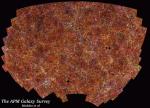 Two Million Galaxies
Two Million Galaxies
7.10.2007
Our universe is filled with galaxies. Galaxies -- huge conglomerations of stars, gas, dust -- and mysterious dark matter are the basic building blocks of the large-scale universe. Although distant galaxies move away from each other...
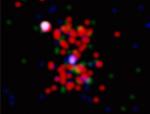 3C294: Distant X Ray Galaxy Cluster
3C294: Distant X Ray Galaxy Cluster
21.02.2001
Large clusters of galaxies are the most massive objects in the universe. Astronomers now realize that a hallmark of these cosmic behemoths are gas clouds with temperatures of tens of millions of degrees that pervade the clusters and radiate strongly in x-rays.
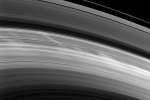 Spokes Reappear on Saturns Rings
Spokes Reappear on Saturns Rings
2.06.2009
What causes the mysterious spokes in Saturn's rings? Visible in the above image as light ghostlike impressions, spokes were first discovered by the Voyager spacecraft that buzzed by Saturn in the early 1980s. Their existence was unexpected.
 Where a Black Hole Roams
Where a Black Hole Roams
21.09.2001
Black hole candidate XTE J1118+480 is known to roam the halo of our Milky Way Galaxy. This exotic system - thought to be a stellar mass black hole consuming matter from a companion star - was discovered only last year as a flaring celestial x-ray source.
 Planck Maps the Microwave Background
Planck Maps the Microwave Background
21.07.2018
What is our universe made of? To help find out, ESA launched the Planck satellite from 2009 to 2013 to map, in unprecedented detail, slight temperature differences on the oldest optical surface known -- the background sky when our universe first became transparent to light.
|
January February March April May June July |
|||||||||||||||||||||||||||||||||||||||||||||||||